Application of the Quantitative Descriptive Analysis in Cosmetics Sensory Evaluation
Jiang Ligang, He Yanjie, Chen Bin, Huang Jiefang
Proya Cosmetic Corporation Limited, China
Abstract The sensory evaluation method was introduced so late in China, and a complete system of this method has not built yet in cosmetics industry. In this article, the application of the Quantitative Descriptive Analysis method in the evaluation of the sensory assessment items are studied. With the SPSS reliability analysis, it was found that the Quantitative Descriptive Analysis method is not suitable for some sensory assessment items.
Key words cosmetics; sensory evaluation; quantitative descriptive analysis method
Introduction
Cosmetics sensory evaluation is an important judgment method of the product popularity after its launch. It is a key issue to determine the correlation between certain sensory properties that can be measured and sensory responses of general consumers in cosmetics quality evaluation.[1]According to IFT (Institute of Food Technologists)and ASTM (American society for Testing Materials),sensory evaluation technology is a science for the arousal,measurement, analysis and interpretation of sensory quality of cosmetics through visual, olfactory, tactile, taste and hearing organs.[2]At present, there are many methods of sensory analysis, such as difference test method, scale and category test method, descriptive analysis method,consumer acceptance and preference test method.[3]As far as descriptive analysis method is concerned, there are many kinds of classification and evaluation methods for the description of sensory characteristics, but in practical application, the utilization of quantitative descriptive analysis is relatively high. As a kind of descriptive sensory evaluation method, QDA (Quantitative Descriptive Analysis) was introduced by Tragon Company in the 1970s. The method can objectively reflect the sensory characteristics by scale marking. It can not only qualitatively analyze the samples, but also analyze the data measured by multivariate statistical method, combining qualitative and quantitative methods.[4]
In cosmetics sensory analysis, contrast marking is generally used to evaluate various sensory performances before use (such as spreadability and thickness), in use(such as moisture content, oil content, and absorption rate) and after use (softness, moisture and gloss).[5]At present, a complete set of standard system has not been established in the definition and judgment method of cosmetics sensory description words.[6]This paper studies the application of quantitative description analysis method in the sensory evaluation of cosmetics, and analyzes whether it is applicable to single feature sensory words and complex sensory words.
Material and method
Test sample
Comparative sample: Uzero Firming & Hydrating Elastic Cream; Sample A: Uzero Deep Hydrating Cream With Lotus;Sample B: Proya Deep Ocean Perfect Whitening Cream;Sample C: Proya Multi-Restorative Night Cream.
Test Material and instrument
Mild fragrance-free amino acid cleanser, self-made;fragrance-free tissue, Vinda Paper (China) Co. Ltd; fragrancefree wet tissue, Kangbei (Shanghai) Co. Ltd; timer PS-390,Shenzhen Zhuiri Electronic Technology Co., Ltd; evaluation questionnaire, internally set; cream jar (10 g); sticky label paper; plastic dispenser (1 mL).
Test method
1) Condition of the sensory evaluation lab
The sensory evaluation stage in this test is finished in the sensory evaluation lab of Proya R&D center. The room is undisturbed, and it maintains proper temperature,humidity and ventilation. The humidity is (50 ± 10)% and the temperature is (22 ± 1) oC.[7]
2) The screening of sensory evaluator
The sensory evaluators are all female, and ages 20-40.They are divided into 2 groups. One is professional group(12 people) consists of long-trained sensory evaluators and the other is composed of volunteers from consumers (12 people).The preparation of sensory evaluators:
a) The evaluators don’t use any skincare products on arm and face skin within 5 hours before test.
b) The evaluators sit quietly for 30 minutes in the room with(50 ± 10)% humidity and (22 ± 1) oC temperature. During this period, evaluators are acquainted with sensory evaluation criteria (Table 1) and evaluation questionnaire.Sensory Evaluation Procedure:
a) Evaluators wash arm (1 min, 3 cm off the tap) and face with mild fragrance-free amino acid cleanser;dry face and arm with fragrance-free tissue.
b) Enter the sensory evaluation lab; mark the inside area of evaluators’ arm where is 5 cm off the wrist by a 5 cm × 5 cm caliper plate. One area is the reference area and the other is the sample area.
c) Use skincare product after 2 min; apply 0.2 mL sample to the inner marked area with a syringe (without needle).
d) Massage in circular motion with a speed of 1 ~ 2 r/min;evaluate the sample after 3 circles.
e) After 11 circles, tap to promote absorption; evaluate performance by comparing to comparative sample at 2 min, 3 min and 5 min after absorption.
f) After the first group of evaluation, cleanse test area with fragrance-free amino acid cleanser; dry it and repeat procedure (b), (c), (d), (e), taking the next round of testing.
g) The face test is finished in 3 days. Test a group of products per day according to the order of comparative sample A, comparative sample B and comparative sample C.
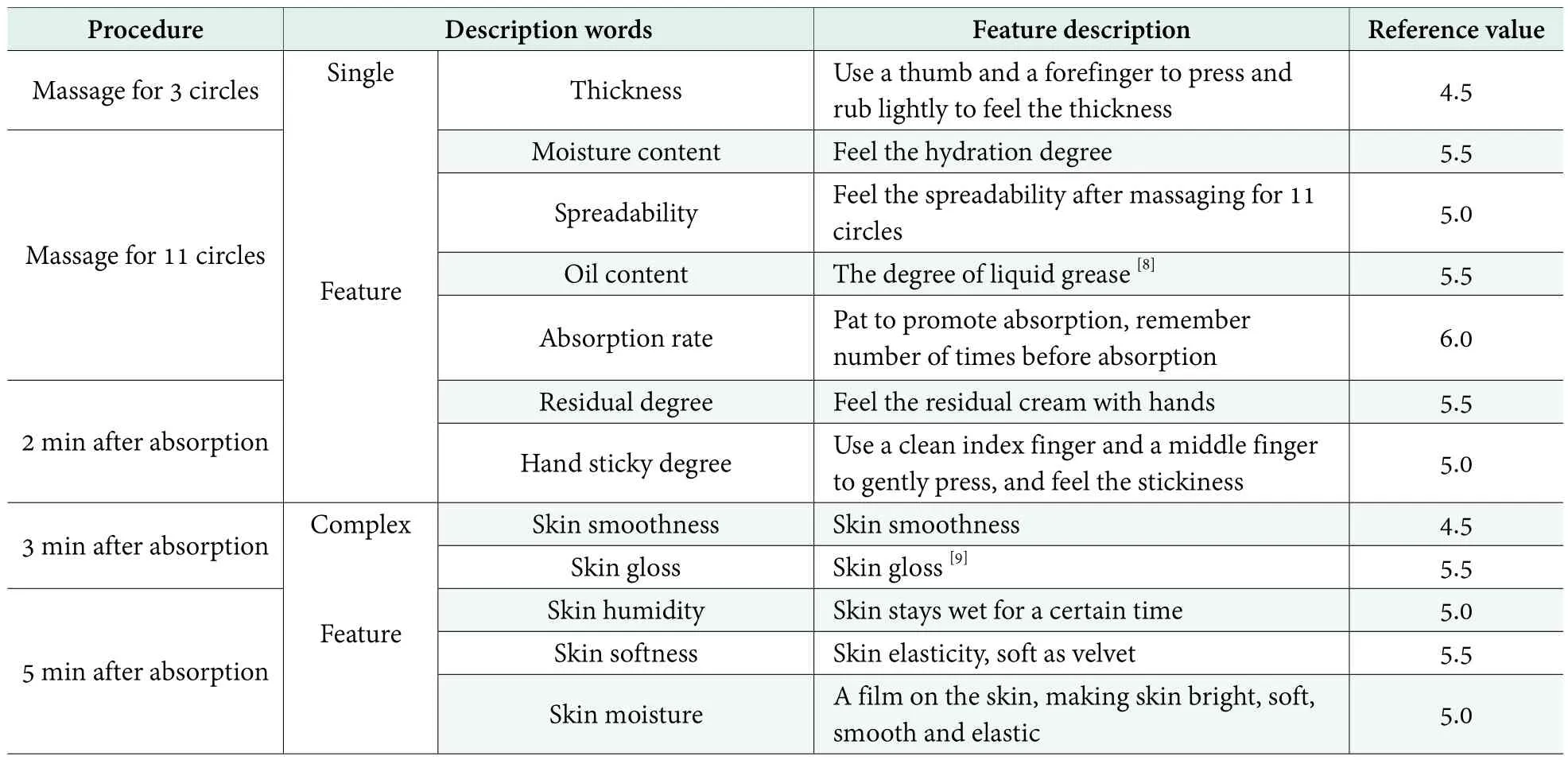
Table 1. Sensory evaluation criteria (cream)
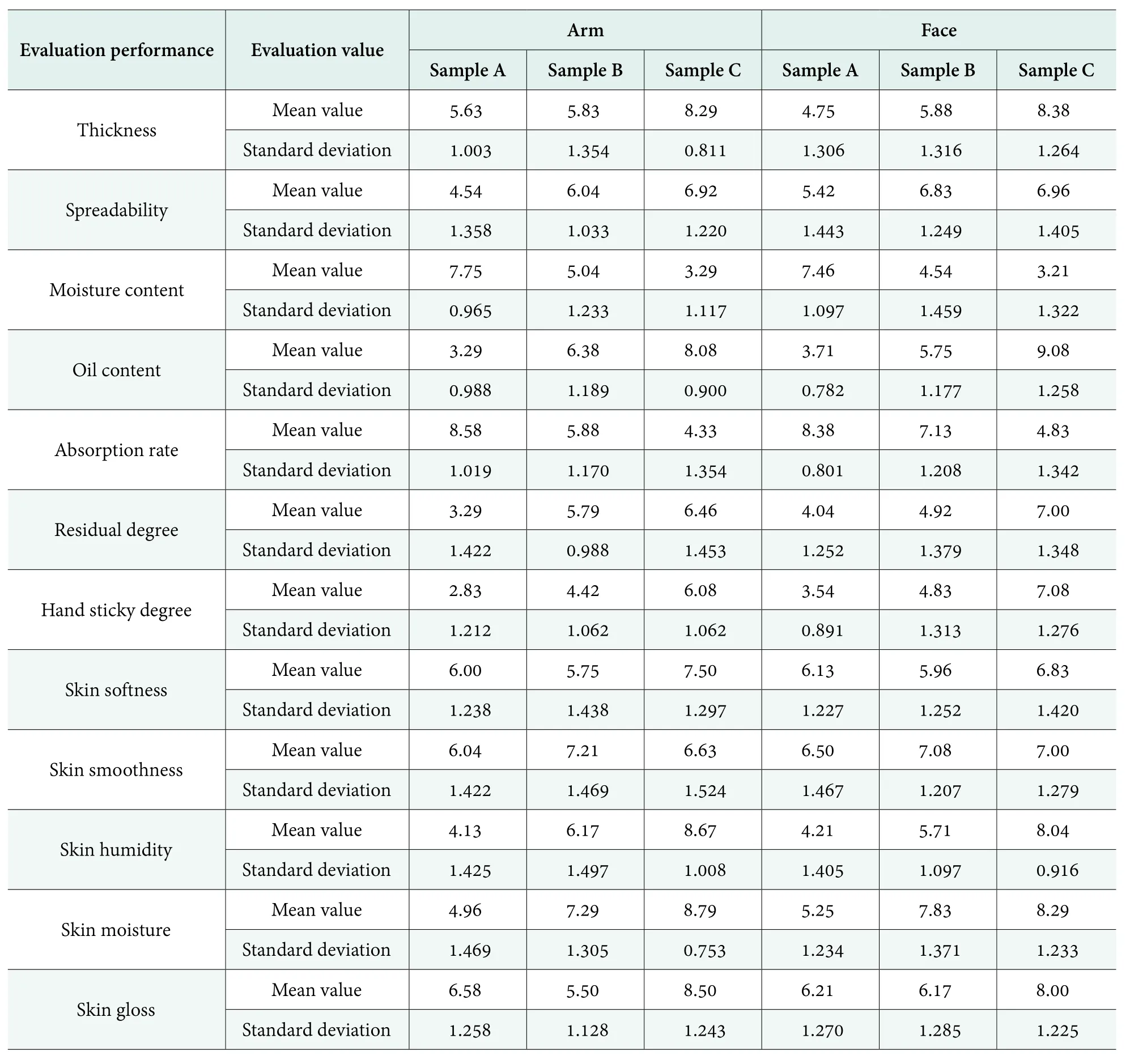
Table 2. The evaluation results of consumer group
Data processing:
Collect the evaluation results of 3 samples respectively on arm and face; organize the data by statistical software SPSS 19.0.
Results and Discussion
12 consumer evaluators and 12 professional evaluators respectively evaluate the sensory performances of 3 samples and come to rigorous result data. Use contrast marking to evaluate the feature description words (10 scores). The score will be higher than reference value if the performance is better than contrast sample; conversely, it will be lower than the reference value.[11]The evaluation results of 3 creams from consumer group and professional group see Table 2 and Table 3 respectively.
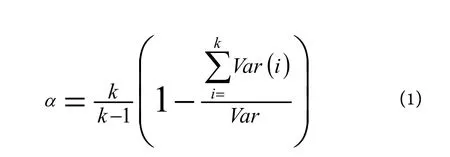
Then analyze the above data by SPSS. The confidence level (Cronbach’sα) is expressed by the following formula (1).
kis the total number of items in the table;Var(i)is the variance ofi;vis variance is total items (see the corresponding meaning in Table 4). Table 5 shows the confidence level data from consumer sensory evaluation group.
In order to compare the variation of Cronbach’sαwith and without single/compound feature description words, the author calculates the data of Table 5 and the result is shown in Table 6.
According to Table 5 and Table 6, taking sample B on arm as an example, in the 7 single feature description words, only when “residual feeling” is removed will the overall Cronbach’s α increase. Whereas the overall Cronbach’s α will increase once any one of the 5 compound feature description words is removed. It shows that when the consumer group use quantitative descriptive analysis to evaluate a single feature description word, the result is credible, while the evaluation of compound feature description word would reduce the credibility of the overall result. The same conclusion can be drawn when analyzing other products of the arm and face with the same method.
Table 7 lists the confidence level of the evaluation results of the professional sensory evaluation group. The result of table 7 is shown in Table 8.
According to Table 7 and Table 8, taking sample B on arm as an example, when any of the 7 single feature description words is removed, the overall Cronbach’s α will decrease; when removing “skin softness”, “skin smoothness”, “skin humidity” and “skin moisture” of the 5 compound feature description words, the overall Cronbach’s α will all increase. It shows that when the professional group use quantitative descriptive analysis to evaluate a single feature description word, the result is credible, while the evaluation of compound feature description word would reduce the credibility of the overall result. The same conclusion can be drawn when analyzing other products of the arm and face with the same method.
From above analysis, both confidence levels of the consumer group and the professional group are low when evaluating the above sensory compound words quantitatively. Therefore, it is inaccurate and unscientific to evaluate compound words using quantitative descriptive analysis method.
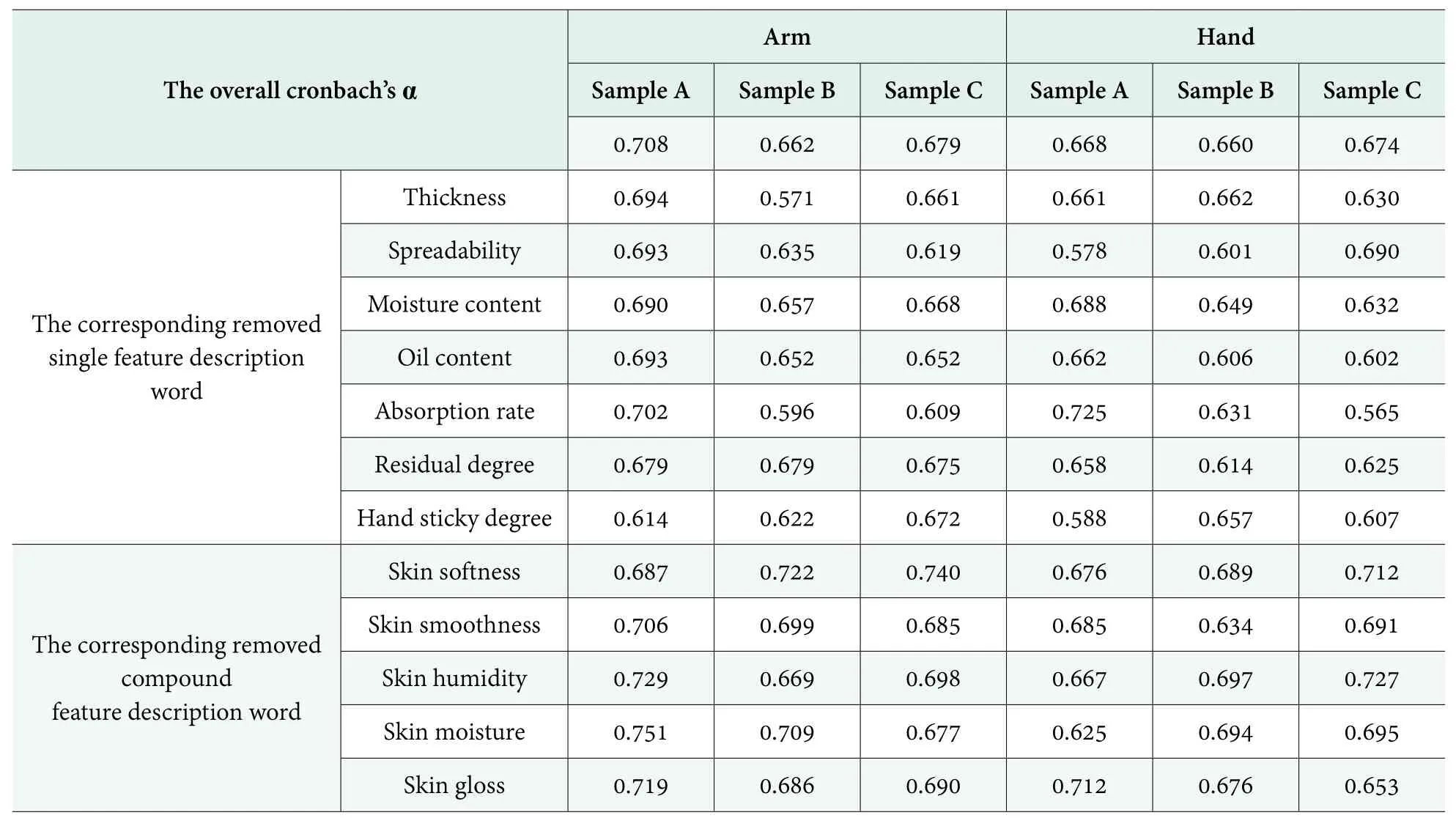
Table 5. The confidence level analysis of evaluation result of consumer sensory group


Table 6. The confidence level analysis of single and compound feature description words score from consumer sensory group

Table 8. The confidence level analysis of single and compound feature description words score from professional sensory group
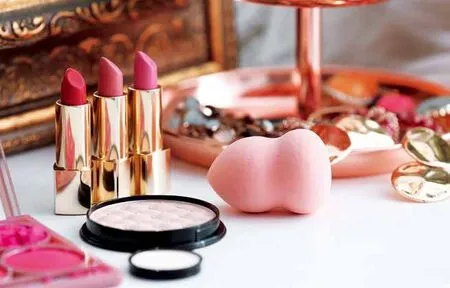
Conclusion
In conclusion, when evaluating cosmetic single feature description words (such as spreadability, thickness,absorption rate) with Quantitative Descriptive Analysis(QDA), scale method will reflect product sensory features more objectively and enhance the accuracy of data. The confidence level result is rather higher by confidence level analysis. Therefore, the application of the Quantitative Descriptive Analysis method in the evaluation of the sensory assessment items is scientific and reasonable.However, when evaluating compound feature description words (such as skin softness, skin smoothness, skin moisture), the confidence level result is low. As a result,QDA is not suggested in the evaluation of compound feature description words. The evaluation method and application of cosmetic compound words are still under investigation.
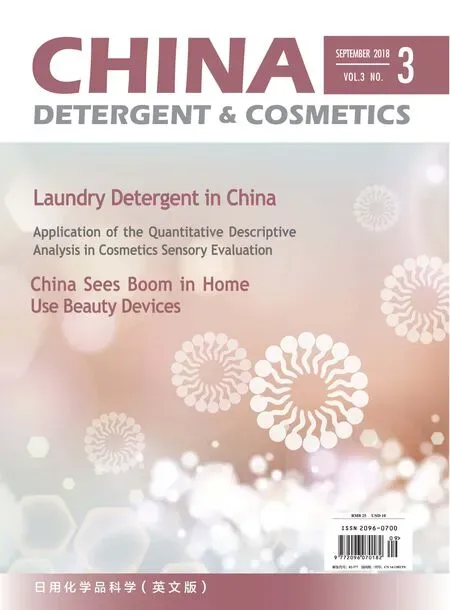 China Detergent & Cosmetics2018年3期
China Detergent & Cosmetics2018年3期
- China Detergent & Cosmetics的其它文章
- Major Industry Events
- Formula Development for Baby Sunscreen Products
- Simultaneous Determination of Six UV-Filters in Cosmetics by HPL C
- Clinical Study on the Anti-Aging Effect of A Cream Containing Ginseng Root Extract and L-Carnosine
- Enhanced Solubilization and Stability of Resveratrol in Cosmetic Applications
- New process for the synthesis of a sun-screening agent isooctyl P-methoxy cinnamate
